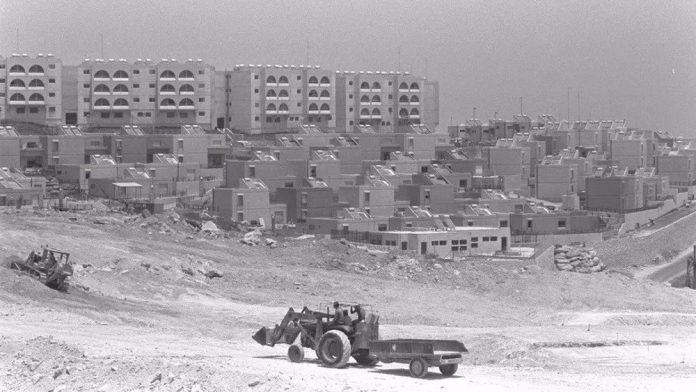According to recently made public documents, the Israeli government destroyed crops on Palestinian agricultural land in the 1970s so that it could build new settlements in the occupied West Bank.
The information was revealed in records and documents from a database maintained by the Jewish Settlements Archival Project, which examines the inner workings of the Israeli cabinet and military during the early years of the settlement project.
The documents, which detailed every step of the establishment of the Gitit settlement in the West Bank from planning to execution in 1972, said the first action was taking land from nearby Palestinian villagers under the false pretense of turning it into a military training area despite fierce resistance from the farmers.
read more: Israel openly backs settler violence and land grab in West Bank
Israeli soldiers destroyed the Palestinians’ farming equipment when they insisted on using it. Later, orders were given for soldiers to destroy the crops using vehicles. When that didn’t work, a crop duster was used to spread a toxic chemical as a radical fix. According to the records, the substance was dangerous for humans as well as deadly for animals.
Although the controversy did not stop the Gitit settlement from being built on land that had been taken from people who had lived in the military-poisoned village of Aqraba, the story briefly gained attention in 1972 when it was covered by foreign media.
In accordance with the documents, the Jordan Valley Brigade was given the mandate by the Israeli military’s Central Command to ensure that “no land is cultivated” in January 1972, including by using vehicles to destroy any existing agriculture.
According to reports, the so-called Custodian of Absentee Property for the Israeli regime summoned Palestinian village chiefs and heads of family clans to remind them “not to break the rules. They had been threatened with having their crops destroyed if they didn’t comply and with being “prosecuted for unauthorized entry into a closed [military] zone”.
The documents also showed that in April 1972, the Israeli military held a meeting at its Central Command with officers, a representative of the Jewish Agency’s settlements division, and the Custodian of Absentee Property. The meeting’s topic was “Spraying the irregular areas in the Tel-Tal sector.”. Later, Gitit was known as Tel-Tal.
The meeting’s goal, per the document, was to determine “responsibility and schedule for the spraying. Additionally, it was stated that no one was to enter the area for three days following the spraying “out of concern for stomach poisoning. Animals were prohibited from entering for a further week, according to the document.
According to the document, 12,000 to 14,000 Israeli pounds, or roughly $25,000., were estimated to have been lost due to the spraying of Palestinians.
The spraying of the area, which was intended to “destroy the harvest,” was carried out following the operation’s approval by the Israeli regime’s Coordinator of Activities in the Territories, according to other documents in the database.
Such Zionist settlements in occupied territories are prohibited by international law, according to the vast majority of world leaders.
Since Israel’s occupation of the West Bank and East al-Quds in 1967, more than 230 settlements have been built, housing more than 600,000 occupying settlers.
The Israeli regime’s settlement activities in these occupied territories have been denounced in numerous UN Security Council resolutions.
The West Bank must be included in a future independent state that has East al-Quds as its capital, the Palestinians are adamant.
Israeli-Palestinian negotiations broke down in their most recent round in 2014. The Tel Aviv regime’s continued expansion of illegal settlements was one of the main issues in those negotiations.













